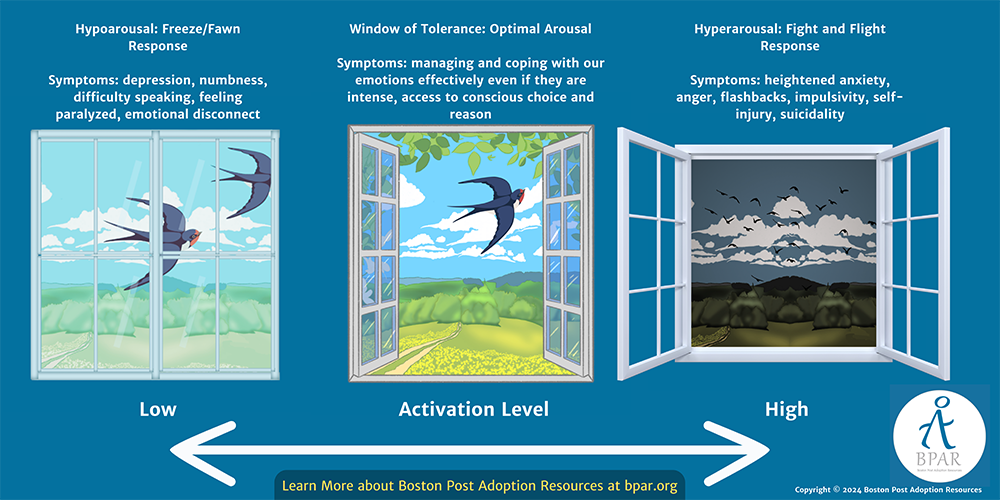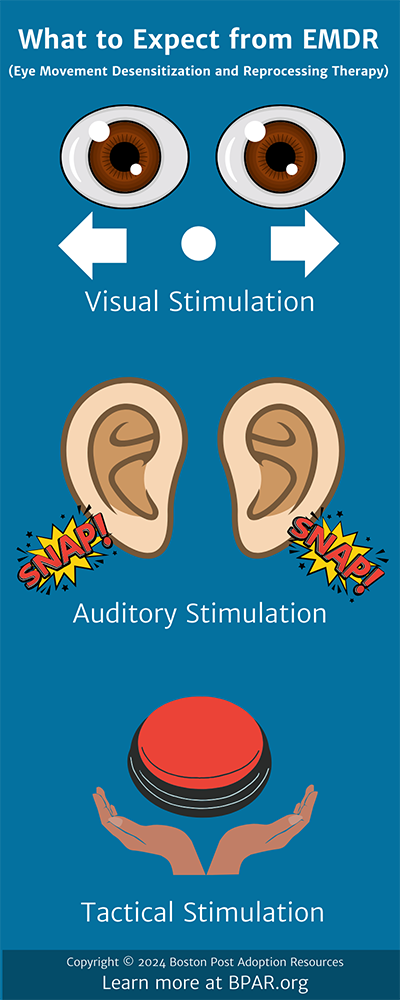EMDR Therapy for Trauma Recovery and Post-Traumatic Stress Disorder
“Trauma and unprocessed painful experiences from the past is not a psychological thing. It doesn’t mean that someone is weak psychologically. It’s not a character issue. It’s a brain thing. . . . Events occurred that increased levels of stress that interfered with the brain’s ability to process the inflow of information, and that information got stuck in the nervous system, it did not have the opportunity to get processed.”
—"Introduction to EMDR Therapy," EMDR International Association
Confused about EM . . . D . . . what? You are not alone!
You may have heard of EMDR, or Eye Movement Desensitization and Reprocessing therapy. EMDR is an extensively researched, effective psychotherapy method proven to help people recover from trauma and post-traumatic Stress Disorder (PTSD) symptoms. EMDR works to help move beyond or process past trauma by helping the body remember an experience, or process it, while preventing our brain from reacting as if it is still in danger. This can promote natural healing. At BPAR, we work with many clients who have experienced significant early life developmental trauma and/or experience some post-traumatic stress symptoms. This blog is designed to give basic education on what you can expect from EMDR and also to debunk some myths floating around out there about EMDR.
What is EMDR?
EMDR can help take the “charge” or intensity out of extremely triggering traumatic memories that are negatively impacting the individual in their present lives. The goal is to help the client stay regulated, or in their optimal window of arousal, without going into fight or flight mode.

You do not have to have a history of trauma for EMDR to be helpful. Ongoing research supports positive clinical outcomes showing EMDR therapy as a helpful treatment for disorders such as anxiety, depression, OCD, chronic pain, addictions, and other distressing life experiences.
Unlike some other therapies, “EMDR therapy does not require talking in detail about the distressing issue or completing homework between sessions. EMDR therapy, rather than focusing on changing the emotions, thoughts, or behaviors resulting from the distressing issue, allows the brain to resume its natural healing process” (EMDR International Association).
“One of the tricks that can happen is our mind convinces us that we’re still reliving those memories, we’re not just remembering them.”
—"Introduction to EMDR Therapy," EMDR International Association
Check out this helpful introductory video from the EMDR International Association to further build your knowledge about EMDR and build realistic expectations.
Source: https://www.emdria.org/about-emdr-therapy/
What You Can Expect from EMDR
An EMDR clinician will use “bilateral stimulation” (BLS) to activate different parts of the brain including working memory and the orienting response, similar to the brain in REM sleep.
What does this look like? BLS may involve alternating bilateral visual (eye movement), auditory, or sensory stimulation (e.g. tactile stimulation). Here is an example from bilateralstimulation.io.
Most clinicians use a method where you follow an image (like a dot) with only your eyes, left to right, without moving your head. Many also choose to use butterfly chest tappings, alternating taps on your right and left hands. Please see the Introduction to EMDR Therapy video referenced above (especially the discussion of how a therapist guides a client through sets of rapid eye movements starting at 5:44) and the bilateral stimulation webpage.
Your EMDR clinician will help you develop extensive coping skills. These skills include visualization to aid in containment and also in developing a felt sense of safety which can assist you in developing a larger window of tolerance in which you can effectively manage and cope with your emotions, even if they are intense.
Note that EMDR can create some discomfort that is likely lessened at the end of session. Remembering visuals or memories that are painful can stir up some intense feelings. The goal is that EMDR will help reduce this intensity or take “the charge” out of intense emotions and also provide coping skills (above) to help manage intense emotional reactions that may arise.
Continued processing after an EMDR session is normal and can include vivid dreams or shifts in emotion.
"While this process takes time, it can be a liberating experience to remember past experiences without the burden of shame, guilt, or fear" (Jovanic, 2023).
What You Should NOT Expect from EMDR
Do not expect EMDR to:
- create new memories
- solve mysteries, give answers, help you to remember if you were abused or victimized
- ask you to relive your traumatic experiences in a way that feels unsafe

Is EMDR Right for You?
It’s important to know that not every therapy is for everyone. A trained EMDR therapist who is trained in multiple types of therapy (i.e. Sensorimotor Psychotherapy and other mind-body techniques or Internal Family Systems as some examples) can help find the right fit of trauma work for you. New research suggests we don’t need to dig up all of the worst traumas to heal. When you are looking for an EMDR therapist, look for an EMDR trained or EMDR Certified therapist.
- An EMDR trained clinician completed basic training and the required supervision hours to practice EMDR.
- An EMDR Certified therapist has completed an additional certificate and many more supervision hours.
At BPAR we only have one EMDR trained therapist. You can find other EMDR trained therapists here on the EMDR International Association website.
Written by KC Craig
Boston Post Adoption Resources
References
Introduction to EMDR therapy. EMDR International Association. https://youtu.be/Pkfln-ZtWeY
Jovanic, N. (2023) Understanding the window of tolerance. Bright Horizon Therapies. https://brighthorizontherapies.com/blog/understanding-the-window-of-tolerance
Kramer, E. (2024) Adoption trauma part 1: What is adoption trauma? Boston Post Adoption Resources blog. https://bpar.org/adoption-trauma-part-1-what-is-adoption-trauma/
Lane, S. (2022) A comprehensive guide to EMDR therapy. Eddins Counseling Group.
Maxfield, L. (2019). A clinician’s guide to the efficacy of EMDR therapy. Journal of EMDR Practice and Research [Editorial], 13(4), 239-246. Open access: http://dx.doi.org/10.1891/1933-3196.13.4.23
Shapiro, F., & Forrest, M. S. (2016). EMDR: The breakthrough therapy for overcoming anxiety, stress, and trauma. Hachette UK.
Simple BLS tools for EMDR therapists. bilateralstimulation.io.
Van der Kolk, B.A., Spinazzola, J., Blaustein, M.E., Hopper, J.W., Hopper, E.K., Korn, D. L., & Simpson, W.B. (2007). A randomized clinical trial of eye movement desensitization and reprocessing (EMDR), fluoxetine, and pill placebo in the treatment of posttraumatic stress disorder: treatment effects and long-term maintenance. Journal of Clinical Psychiatry, 68(1), 37-46.
What is EMDR therapy? EMDR International Association. https://www.emdria.org/about-emdr-therapy/